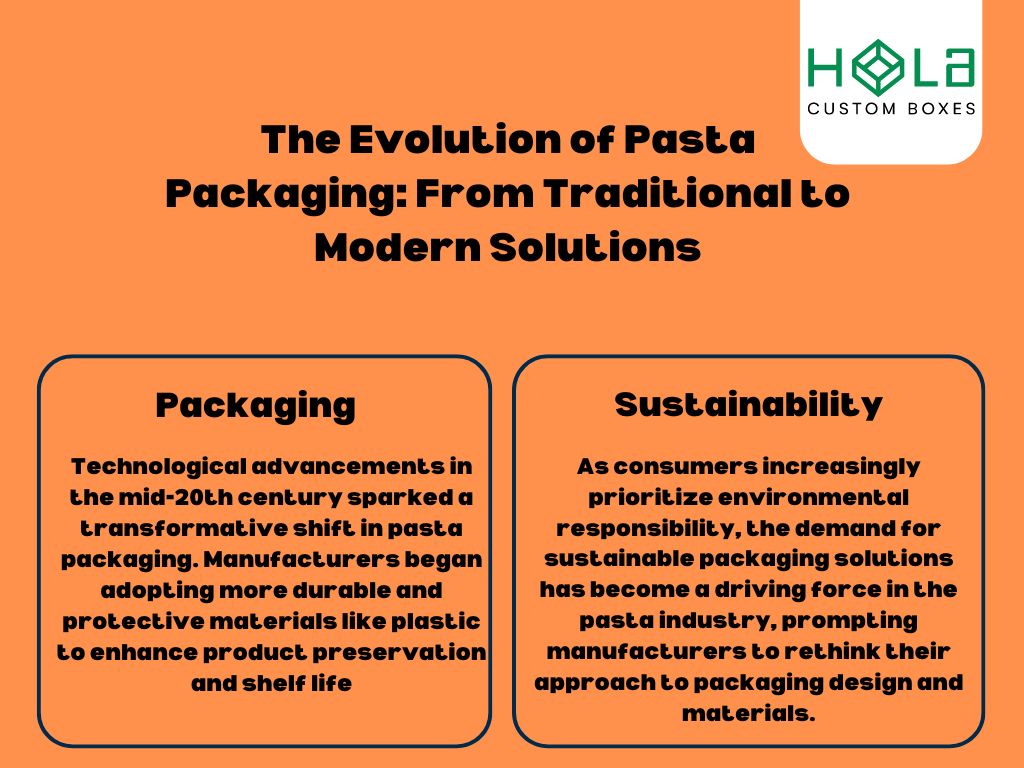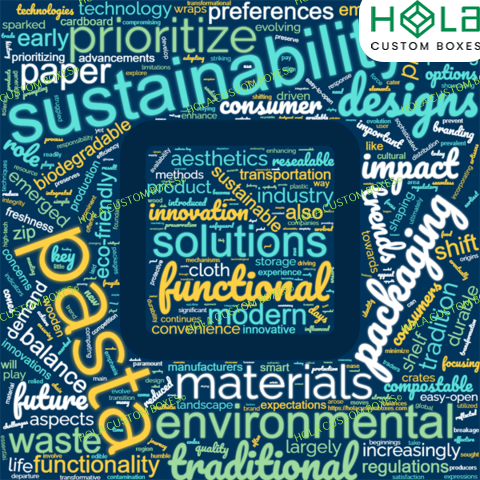The Evolution of Pasta Packaging: From Traditional to Modern Solutions
2025-11-28 13:01:46.jpg)
The evolution of pasta packaging has been shaped by a centuries-long journey, from humble beginnings in traditional materials like cloth, wood, and paper to the modern, high-tech solutions of today. Early packaging methods reflected cultural and functional aspects, with cloth wraps, wooden crates, and paper cones prioritizing ease of transportation and storage.
The transformation phase introduced durable materials, resealable zip locks, and branding elements, striking a balance between tradition and innovation. Modern solutions prioritize sustainability, convenience, and aesthetics, incorporating eco-friendly options, smart technology, and functional designs. As the packaging landscape continues to shift, explore how the industry is poised to transform further.
Main Points
• Traditional pasta packaging relied on materials like paper, cardboard, and cloth, prioritizing functionality over aesthetics.
• The transition phase introduced durable materials like plastic, resealable zip locks, and easy-open mechanisms, balancing tradition and innovation.
• Modern pasta packaging prioritizes sustainability, convenience, and aesthetics, with eco-friendly options, smart technology, and functional designs.
• Sustainability plays a crucial role in modern pasta packaging, driven by consumer demand, eco-friendly materials, and evolving regulations.
• The future of pasta packaging will involve integrating emerging trends, focusing on innovation and sustainability, and balancing consumer expectations and environmental concerns.
The Origins of Pasta Packaging

In the earliest days of pasta production, packaging consisted of simple, yet effective methods that utilized readily available materials such as cloth, wood, and paper to protect the fragile strands during transportation and storage. These early packaging methods were largely influenced by cultural and functional aspects, with artisans and traders seeking to preserve the quality of their product while also showcasing their artistic expressions.
The history of pasta packaging reveals a narrative of innovative designs and resourceful use of materials. Cloth wraps, wooden crates, and paper cones were employed to safeguard the pasta during transportation, while also reflecting the cultural influences of the region. The functional aspects of packaging were paramount, as producers sought to prevent breakage and contamination. As trade and distribution expanded, the need for more sophisticated packaging solutions arose, paving the way for the evolution of pasta packaging. This early period laid the foundation for the development of modern packaging solutions, which would eventually prioritize both aesthetics and functionality.
Traditional Pasta Packaging: An Overview

Traditional pasta packaging emerged from the early days of pasta production, relying on materials such as paper, cardboard, and cloth to safeguard the fragile strands during transportation and storage. These materials, though readily available, had limitations in durability and protection. The design trends of the time prioritized simplicity and functionality over aesthetics, focusing on ease of transportation and storage. Preservation techniques were basic, relying on the natural drying process to extend shelf life.
Consumer preferences were largely driven by availability and affordability, with little emphasis on environmental impact. As a result, traditional packaging significantly influenced shelf life and product quality, often compromising the integrity of the pasta. The environmental impact of these materials was also significant, contributing to waste and resource depletion.
Despite these limitations, traditional pasta packaging played a critical role in establishing pasta as a global food staple, paving the way for innovations in packaging solutions.
Advancements in Pasta Packaging Materials and Design
The mid-20th century marked a turning point in pasta packaging as manufacturers embraced new, durable materials like plastic to improve preservation and extend shelf life. This shift away from traditional packaging introduced innovative designs and functional features, such as resealable zip locks and easy-open mechanisms, enhancing convenience and consumer satisfaction. Branding and marketing elements also became integral to packaging, reflecting evolving consumer preferences and industry trends.
Balancing Tradition with Modern Demands
While innovation brought clear benefits, it also presented challenges in maintaining the authenticity of traditional pasta packaging. Manufacturers sought to blend heritage with modern functionality, ensuring their products remained true to their roots while meeting contemporary expectations. This era established a balance between protection, convenience, and aesthetic appeal, setting the stage for the sophisticated packaging solutions seen in the industry today.
Modern Pasta Packaging Solutions
.png)
Modern pasta packaging solutions have evolved to prioritize sustainability, convenience, and aesthetics, driven by advancements in material science and shifting consumer preferences.
Eco-friendly options have emerged as a prominent trend, with biodegradable plastics, compostable materials, and reduced packaging waste becoming increasingly prevalent.
Smart technology has also been integrated into modern packaging, featuring QR codes, resealable packages, and freshness indicators that enhance the user experience.
Functional designs have improved convenience, with easy-to-open and resealable packaging that preserves freshness and reduces waste.
Aesthetic appeal has also become a key consideration, with visually appealing https://holacustomboxes.com designs that showcase the product and enhance brand identity.
The result is a new generation of pasta packaging that balances sustainability, functionality, and aesthetics, providing consumers with a seamless and enjoyable experience.
These innovative solutions have transformed the pasta packaging landscape, offering a glimpse into a future where packaging is both sustainable and desirable.
The Role of Sustainability in Pasta Packaging
As consumers increasingly prioritize environmental responsibility, the demand for sustainable packaging solutions has become a driving force in the pasta industry, prompting manufacturers to rethink their approach to packaging design and materials.
The shift towards sustainable packaging is largely driven by consumer preferences, with many consumers willing to pay more for eco-friendly products. In response, pasta manufacturers are adopting sustainable materials and innovative designs that minimize environmental impact. For instance, some brands have introduced biodegradable or compostable packaging, reducing waste and pollution.
The growing demand for sustainable packaging has also sparked brand competition, with companies competing to develop the most eco-friendly solutions. Packaging regulations are evolving to accommodate the shift towards sustainability, further driving the adoption of eco-friendly packaging solutions.
As the pasta industry continues to evolve, sustainable packaging is likely to play an increasingly important role in shaping the market.
The Future of Pasta Packaging
One key area of focus in shaping the future of pasta packaging is the integration of emerging trends and technologies that prioritize both innovation and sustainability. As the industry continues to evolve, it is important to strike a balance between innovation and tradition, ensuring that new solutions align with consumer expectations and environmental concerns.
To achieve this balance, several key factors will come into play:
Edible packaging: Biodegradable and compostable materials that reduce waste and minimize environmental impact.
Smart labels: Intelligent packaging solutions that provide real-time monitoring and tracking, enhancing supply chain efficiency and product safety.
Regulatory impact: Adapting to changing regulations and standards that prioritize sustainability, recyclability, and reduced waste.
As the industry moves forward, it is essential to take into account the interplay between innovation, sustainability, and regulatory impact. By embracing emerging trends and technologies, the future of pasta packaging can prioritize both innovation and sustainability, ultimately enhancing the consumer experience while minimizing environmental footprint.
